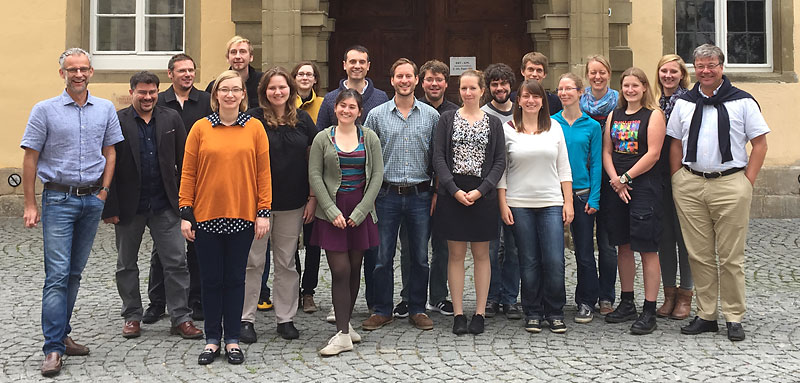Glycans Control Non-Enveloped Virus Infections
*** Die Förderung von ViroCarb endete zum 30.11.2022 ***
*** The funding of ViroCarb ended on 30.11.2022 ***
All mammalian cells are covered in a layer of glycoconjugates - glycoproteins and glycolipids - known as the glycocalyx. Its glycans orchestrate diverse biological processes, including cell-cell recognition, cell growth and differentiation, neoplastic transformation and cell death. The glycocalyx also serves as a barrier against viruses and other intracellular pathogens but is often utilized by such pathogens for attachment and entry (and is sometimes enzymatically processed during the release of progeny virus). The goal of ViroCarb is to better define the role of glycans in infections with non-enveloped viruses.
The focus of ViroCarb
ViroCarb focuses on three families of non-enveloped viruses: Caliciviruses, Polyomaviruses and Papillomaviruses. All three viruses include human pathogens, and in all three cases glycans (sialic acids, histo blood group antigens and glycosamino-glycans) play critical roles in cell attachment and determining host range and tropism. Our goal is to define the parameters that, at the atomic level, guide glycan-binding for members of each of these virus families, and use this knowledge to develop novel compounds with inhibitory and thus antiviral activities. A detailed understanding of glycan receptor interactions will also be used to uncover strategies that allow viruses to switch receptor specificities and alter their host tropism - with important implications for etiology and epidemiology. ViroCarb will provide direct insight into biophysical mechanisms that determine viral target-cell selection, correlate receptor binding with pathogenicity, and provide a platform from which novel antiviral strategies can be launched. On a more general level, ViroCarb will establish novel concepts in non-enveloped virus replication.
From Molecular Interactions to Mouse Models and Epidemiology
ViroCarb comprises nine groups, located at the Universities of Berlin, Düsseldorf, Lübeck, Münster, and Tübingen, as well as the Leibniz Institute for Experimental Virology in Hamburg and the German Cancer Research Center (DKFZ) in Heidelberg. Experimental approaches include protein crystallography, NMR spectroscopy, microscopy, synthetic chemistry, native mass spectrometry, membrane biophysics, cell culture systems and animal (mouse) models. Thus, our collaboration allows us to track viral infections on every level from atomic interactions to physiological phenotypes and, therefore, enables us to propose and test broad concepts in the fields of virology and glycobiology.

